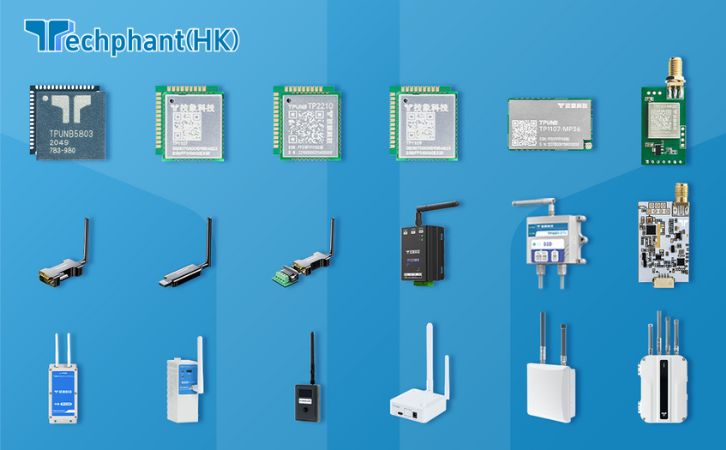The rapid proliferation of unmanned aerial vehicles (UAVs) has made anti-UAV defense systems critical for securing airspace against unauthorized or malicious drones. These systems, which integrate advanced detection, tracking, and neutralization technologies, face significant challenges in addressing the evolving sophistication of drone threats. From distinguishing drones in complex environments to navigating regulatory constraints, developers must overcome technical and operational hurdles. Simultaneously, emerging trends in artificial intelligence (AI), connectivity, and countermeasure technologies promise to enhance the effectiveness of anti-UAV systems. This article explores the key challenges in developing anti-UAV defense systems and the future trends shaping their evolution, highlighting the path toward more robust and adaptive solutions.
I. Technical Challenges in Detection and Classification
One of the primary challenges in anti-UAV defense development is achieving accurate detection and classification of drones in diverse environments. Small drones, often with low radar cross-sections, are difficult to distinguish from birds, balloons, or other airborne objects, leading to false positives that can disrupt operations. For instance, in urban settings, radar systems may struggle with signal interference from buildings, vehicles, or electronic devices, reducing detection reliability. Radiofrequency (RF) sensors, which detect drone control signals, can be overwhelmed by background noise in crowded RF spectrums, complicating the identification of specific drone signatures.
Classification poses another hurdle, as anti-UAV systems must differentiate between malicious drones, authorized UAVs, and non-threatening objects in real time. Current AI algorithms, while improving, require extensive training data to handle edge cases, such as drones with atypical flight patterns or modified communication protocols. For example, autonomous drones that operate without RF signals challenge traditional detection methods, necessitating advanced electro-optical (EO) or infrared (IR) systems. Developing sensors that maintain accuracy across weather conditions—such as heavy rain or fog—adds further complexity, as does scaling systems to detect drone swarms, where multiple UAVs operate cohesively. Overcoming these technical challenges requires integrating multi-sensor fusion and machine learning to enhance detection precision and reduce false alarms.
II. Countermeasure Limitations and Collateral Risks
Deploying effective countermeasures against drones presents significant challenges, particularly in balancing efficacy with safety. Non-kinetic countermeasures, such as RF jamming, can disrupt a drone’s communication or GPS signals, forcing it to land or return to its operator. However, jamming can inadvertently interfere with legitimate communications, such as Wi-Fi networks, air traffic control systems, or emergency services, especially in urban areas. For instance, a poorly targeted jammer deployed near an airport could disrupt aviation communications, posing greater risks than the drone itself. Developing frequency-selective jammers that target only drone-specific bands is a complex engineering task requiring precise calibration.
Kinetic countermeasures, like lasers or net-based capture systems, also have limitations. High-powered lasers, such as those in the U.S. Navy’s LaWS (Laser Weapon System), can neutralize drones but require clear line-of-sight and significant power, limiting their use in cluttered environments. Physical interception methods, like net-carrying drones, are effective for single targets but struggle against swarms or high-speed UAVs. Moreover, kinetic solutions risk collateral damage, such as debris from a disabled drone falling in populated areas. Ensuring countermeasures are safe, scalable, and adaptable to diverse scenarios—while minimizing unintended consequences—remains a critical challenge for developers, necessitating innovations in precision and control.
III. Regulatory and Ethical Constraints
The deployment of anti-UAV systems is heavily influenced by regulatory and ethical considerations, which vary widely across jurisdictions. In many countries, RF jamming is restricted due to its potential to disrupt public communication networks, requiring developers to navigate complex legal frameworks. For example, in the United States, the Federal Communications Commission (FCC) tightly regulates jamming technologies, limiting their use in civilian settings. Similarly, kinetic countermeasures like lasers or projectiles face restrictions in urban areas due to safety concerns, complicating their adoption for public event security or infrastructure protection.
Ethical concerns also arise, particularly regarding privacy and proportionality. Anti-UAV systems that intercept drone signals or capture footage may inadvertently collect data on nearby individuals, raising privacy issues. Neutralizing a drone, especially in civilian contexts, must be proportionate to the threat; disabling a hobbyist’s drone with a laser could lead to legal or public backlash. International regulations further complicate development, as cross-border drone incidents require standardized protocols to avoid diplomatic tensions. Developers must design systems that comply with diverse regulatory frameworks while addressing ethical concerns, such as ensuring transparency in data handling and minimizing excessive force, to gain public and governmental approval.
IV. Future Trends in Anti-UAV Defense Development
The future of anti-UAV defense systems is shaped by rapid advancements in technology and strategic innovation. AI and machine learning are at the forefront, enabling systems to autonomously detect, classify, and neutralize drones with greater accuracy. For instance, AI-driven pattern recognition can improve differentiation between drones and non-threatening objects, reducing false positives. Predictive algorithms can anticipate drone behavior, such as evasive maneuvers or swarm coordination, allowing preemptive countermeasures. These advancements will be critical for countering autonomous drones that operate without human control, a growing threat in both military and civilian contexts.
Next-generation connectivity, particularly 5G and edge computing, will enhance real-time data processing, enabling faster response times in dynamic environments. For example, 5G-enabled anti-UAV systems can integrate data from multiple sensors across large areas, such as airports or military bases, creating a unified defense network. Directed-energy weapons, like high-powered microwaves (HPM), are emerging as scalable solutions for neutralizing drone swarms by disrupting their electronics over a wide area. Additionally, portable and modular anti-UAV systems, such as handheld jammers or drone-mounted nets, will provide flexible, cost-effective options for temporary deployments, such as at public events.
Collaborative defense ecosystems are another trend, with systems integrating with broader air defense networks, such as missile defense systems or air traffic control. Blockchain technology could enhance traceability, allowing authorities to track neutralized drones to their operators for legal action. Furthermore, the development of low-cost, solar-powered anti-UAV systems will make these technologies accessible to smaller organizations or developing nations, democratizing airspace security. These trends collectively point toward more autonomous, interconnected, and adaptable anti-UAV systems capable of addressing future challenges.
Conclusion
The development of anti-UAV defense systems faces significant challenges, from technical hurdles in detection and classification to regulatory and ethical constraints. Overcoming these obstacles requires innovative solutions that balance precision, safety, and compliance with diverse legal frameworks. However, emerging trends in AI, connectivity, and countermeasure technologies offer promising avenues for enhancing system effectiveness. As drones become more sophisticated and pervasive, anti-UAV systems will evolve into autonomous, scalable, and integrated solutions, ensuring robust protection of airspace. By addressing current limitations and leveraging future innovations, developers can create anti-UAV defenses that safeguard critical assets, public safety, and privacy in an increasingly complex aerial landscape.


